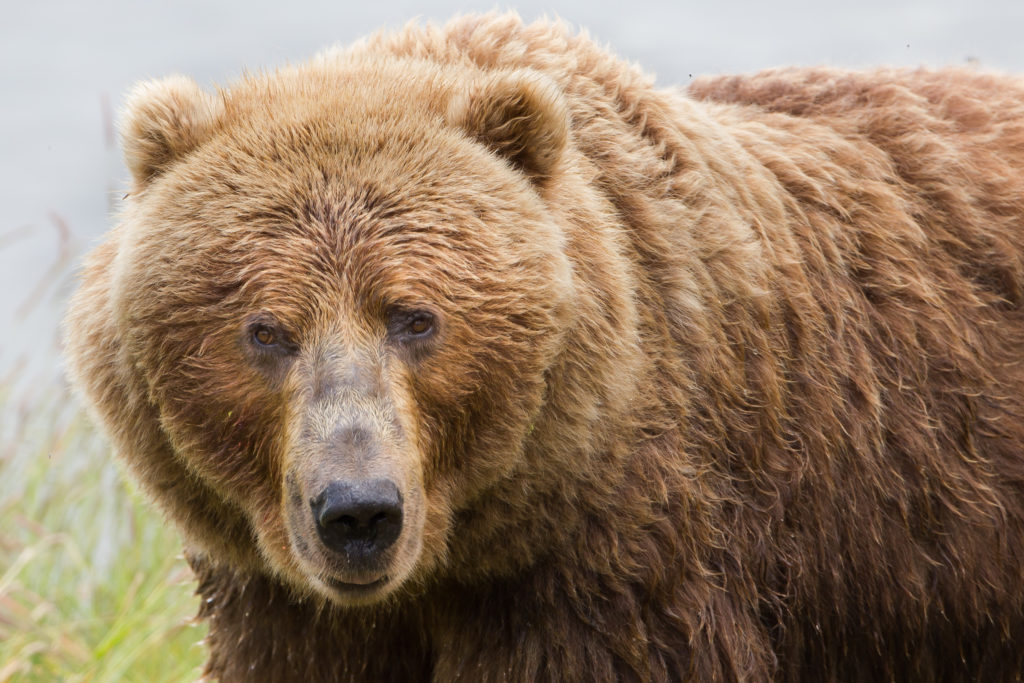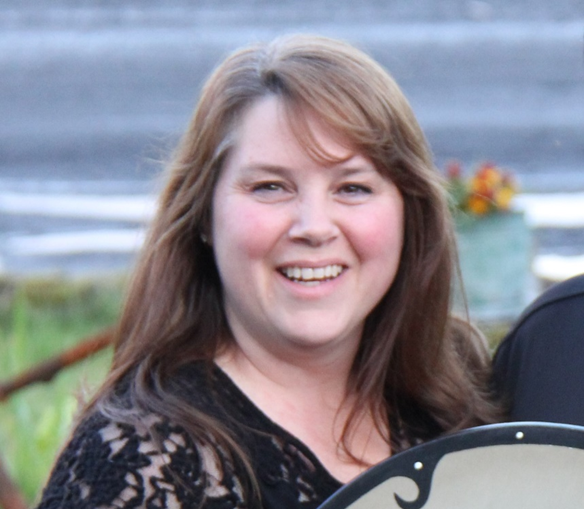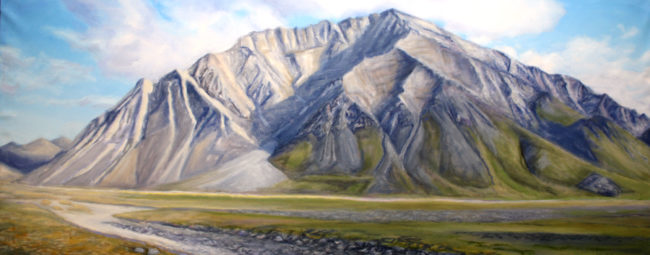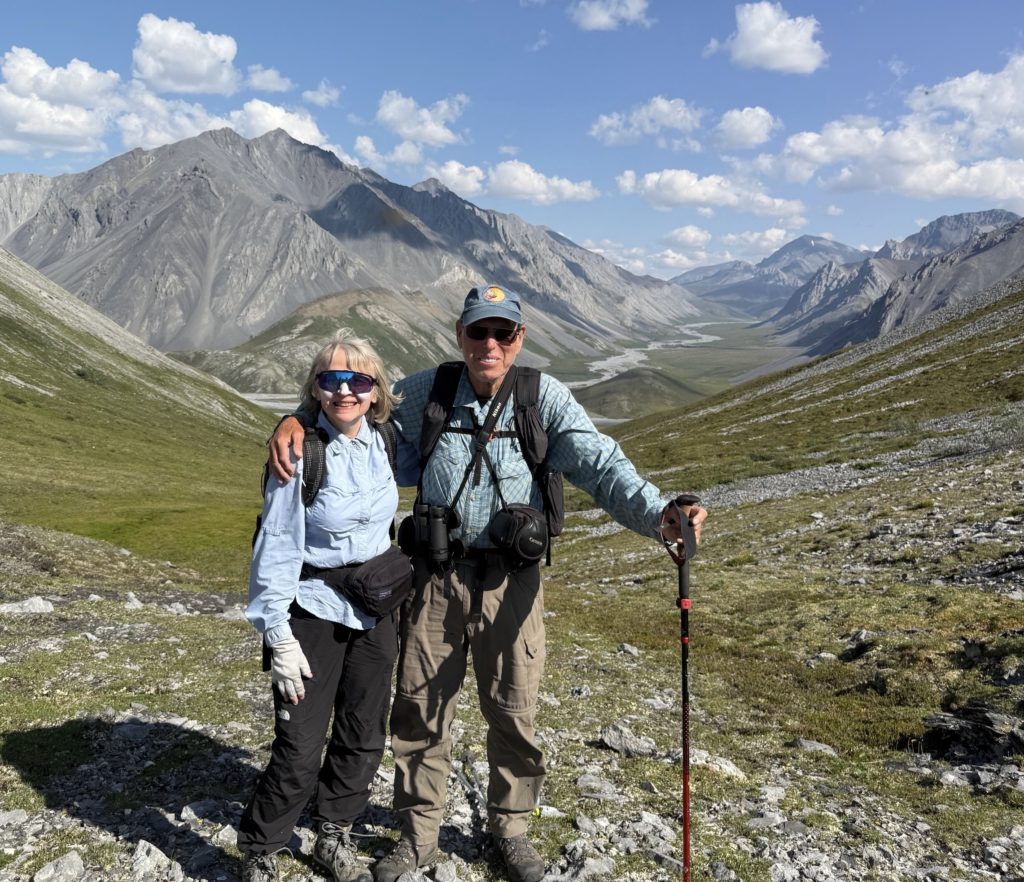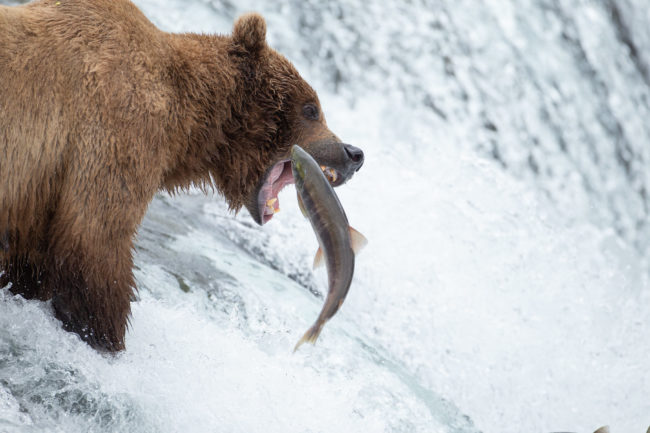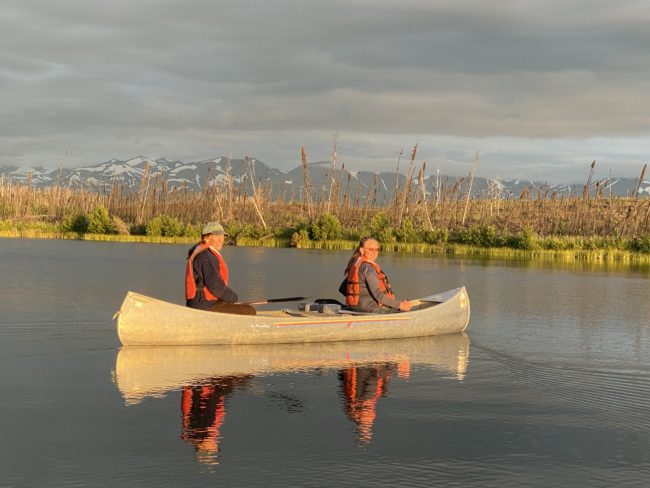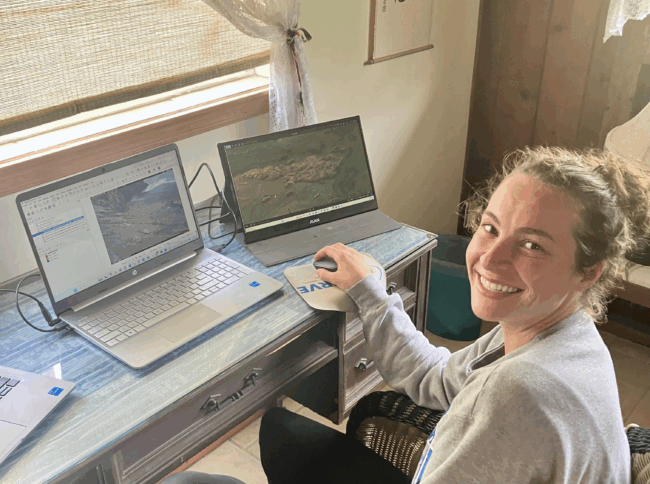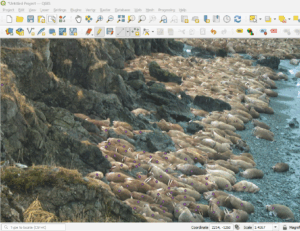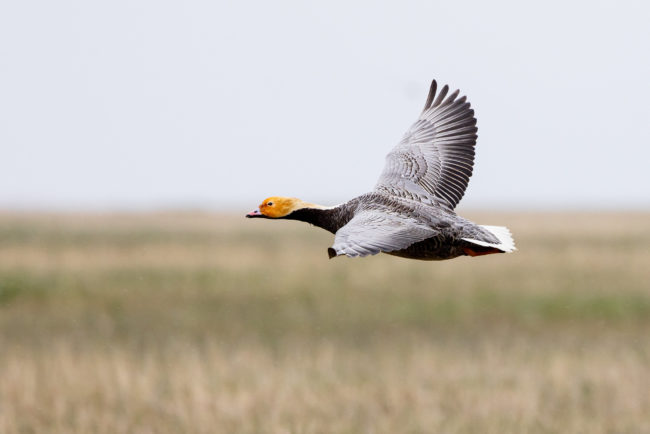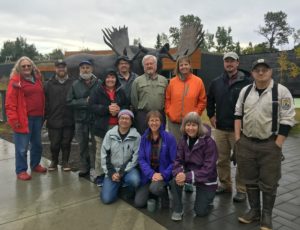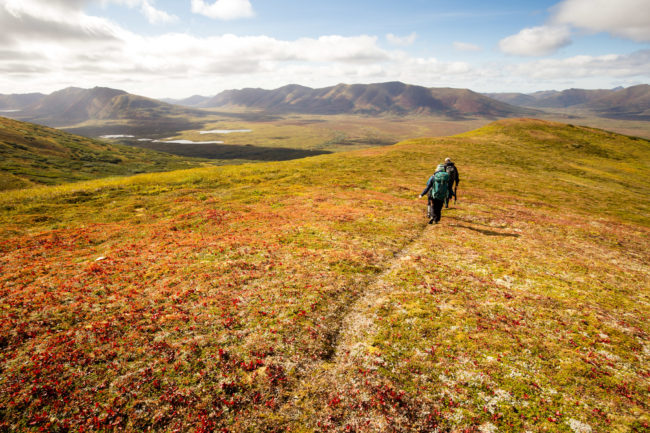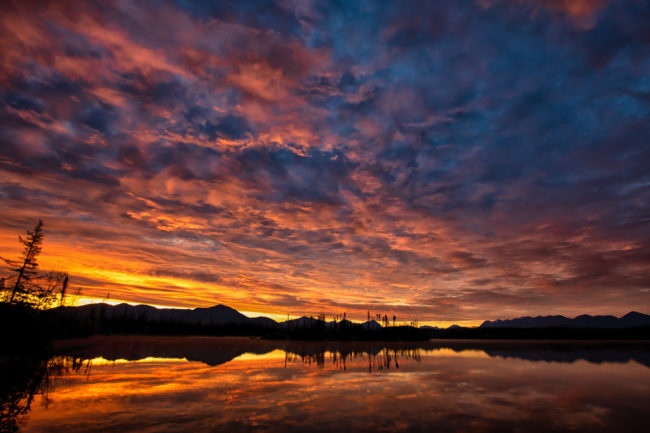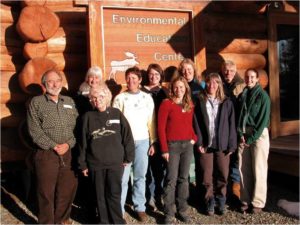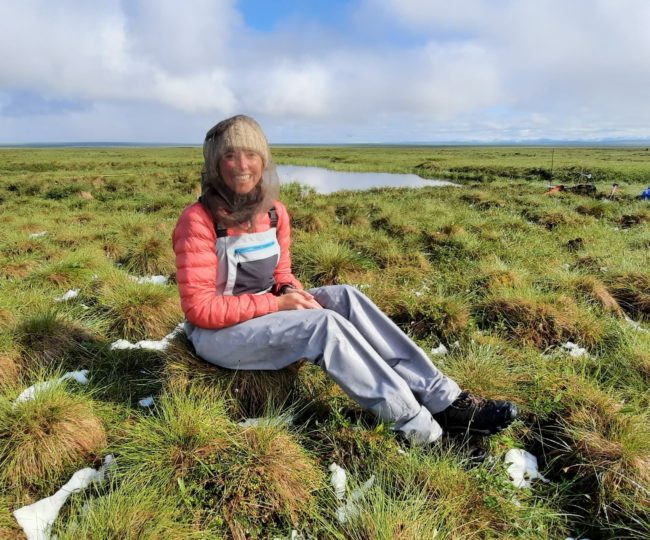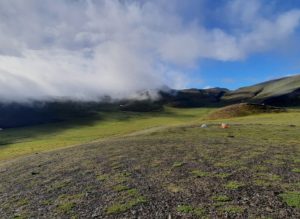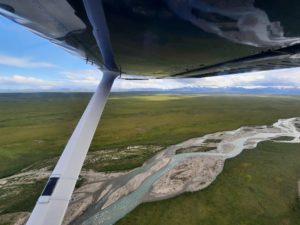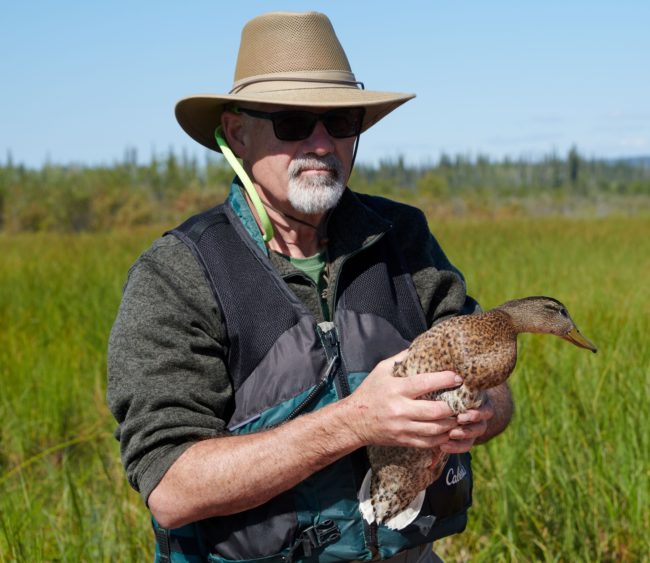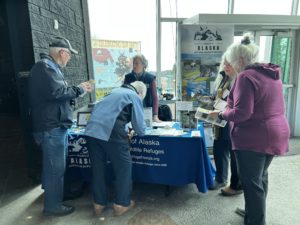Presented by Amy Peterson, Community Affairs Liaison for Koniag and the Kodiak National Wildlife Refuge.
This event was held on Tuesday, September 16, 5 – 6 pm Alaska Daylight Time
- Kodiak – Amy Peterson in person at the Kodiak National Wildlife Refuge Visitor Center, 402 Center Ave. Reception follows.
- Homer – Watch Party at the Alaska Maritime National Wildlife Refuge Visitor Center, 95 Sterling Hwy.
- Soldotna – Watch Party at the Kenai National Wildlife Refuge, Ski Hill Rd
- 3 pm Walk for the Wild on Centennial Trail. Meet at trailhead at Visitor Center
- 6 pm After talk; Wild Foods Potluck
- Anchorage – Watch party at BP Energy Center, Fir Room, 1014 Energy Ct.
- Via Zoom
Home of the great Kodiak bear, Kodiak Refuge is one of the nation’s most significant national wildlife refuges, yet people have lived there and depended on refuge resources for thousands of years. Searching for a creative way to increase cooperation among all partners on Kodiak Island, then Refuge Manager Mike Brady and Koniag Regional & Legislative Affairs Executive Tom Panamaroff came up with the idea of a Community Affairs Liaison position. It was to be the first in the nation and would be jointly funded by the refuge and the corporation and supervised by the corporation.
Join Amy Peterson as she describes her invaluable role as Community Affairs Liaison. Amy’s job is facilitating communication and education between the Refuge and Kodiak Island tribes, corporations, and stakeholders, with emphasis on stewardship, tribal consultation, community collaboration, and cultural and educational outreach. This collaboration is not just limited to the Refuge but occurs throughout the Kodiak Archipelago region to improve the cooperative management of resources within the Refuge, which has specific geographic, cultural, and historical significance.
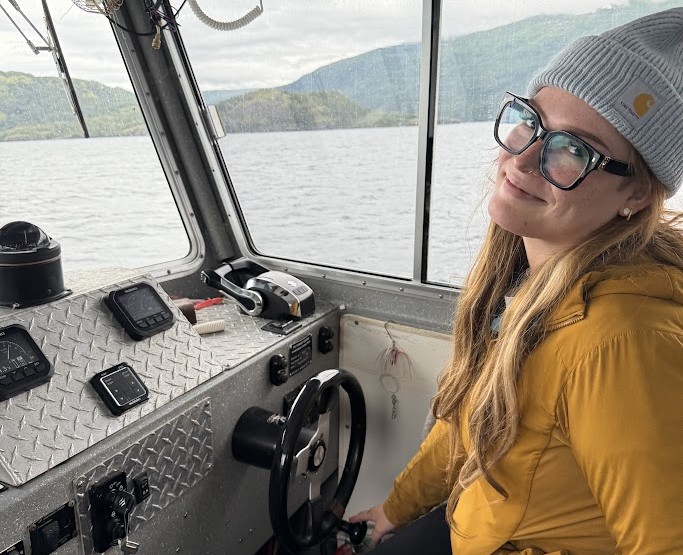
The nearly two million acre Kodiak Refuge makes up almost two-thirds of Kodiak Island. Six villages are on or adjacent to the refuge and the refuge borders lands owned by Alaska Native village and regional corporations. In addition, lodges, commercial fishing sites, visitors, Kodiak City and Kodiak Coast Guard Base create a diverse human environment. The refuge needed someone who could navigate those worlds and bring people and organizations together and that is Amy. Come hear from upbeat Amy all about this hopeful project that is improving things for people and wildlife and creatively helping the refuge in a time of staff and budget crunch. And there will be a quiz! With prizes! And you can play online.
This program which started in 2021 has since been copied by Yukon Delta Refuge with a Community Affairs Liaison in Mountain Village. Other refuges across the country have made inquiries to Kodiak about how to do something similar.
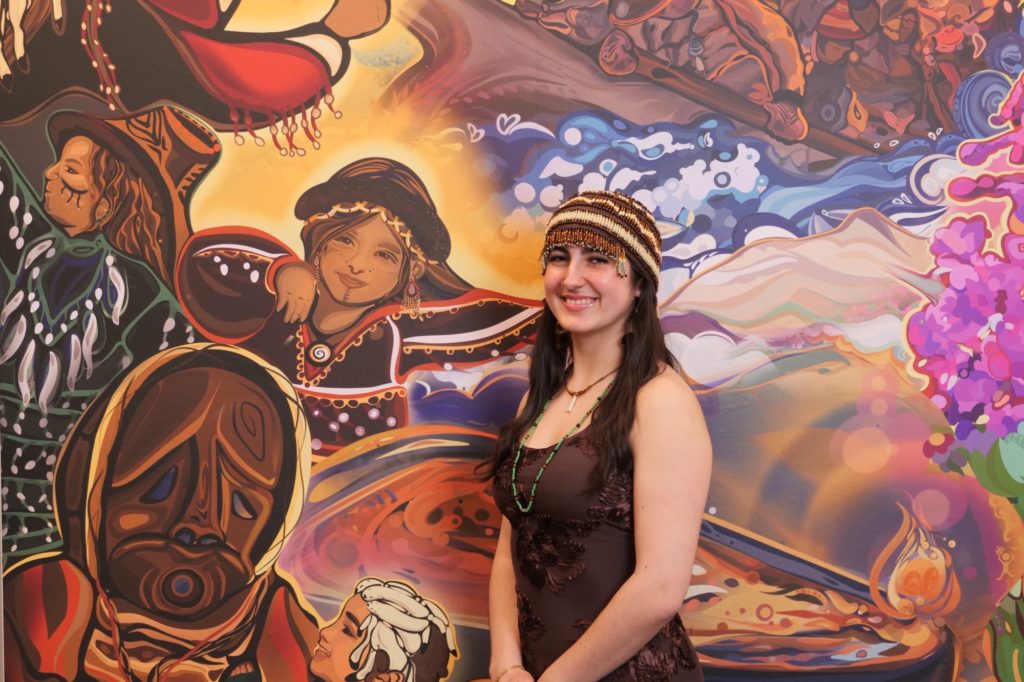
Background
Kodiak National Wildlife Refuge is famous for its brown bears — largest of the brown (grizzly) bears — salmon, rugged coastline and emerald green scenery. The refuge was created in 1941 to protect Kodiak bears and their habitat. Today, the refuge has a broader purpose striving to protect interdependent species of fish, wildlife and plants within the largest intact, pristine island ecosystem in North America; and to ensure compatible management of wildlife, subsistence, recreation, and economic uses of refuge resources.
Koniag is an Alaska Native regional corporation formed pursuant to the Alaska Native Claims Settlement Act. Headquartered in Kodiak, Alaska, Koniag is owned by nearly 4,600 Alaska Native Shareholders of Sugpiaq and Alutiiq ancestry who have called the Kodiak Archipelago region — including the lands within the Refuge — their traditional homeland for more than 7,500 years. Koniag Shareholders and their Descendants continue to live on or near Refuge lands and rely on the harvest of wild foods and natural resources from within the Refuge for cultural, economic, nutritional, and spiritual sustenance.
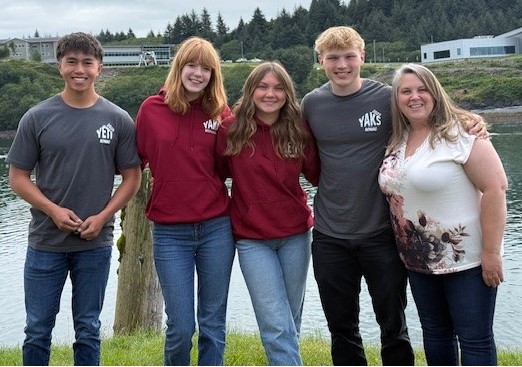
Biography
Amy Peterson’s background prepared her well for this unique role as the Community Affairs Liaison for Koniag and the Kodiak National Wildlife Refuge. Although raised outside the state, she is the daughter of two schoolteachers who taught in Old Harbor and Port Lions. When Amy came to Alaska, she settled in Old Harbor, working 17 years for the school district which gave her a solid background in youth programs. In addition, she worked for the Old Harbor Native Corporation and in the Village Clinic as her original training was as a certified medical assistant. She has five children and nine grandchildren and divides her time between Old Harbor and Kodiak City. Amy cherishes family life and engaging in traditional activities such as berry picking, fishing, and preparing comfort foods.
